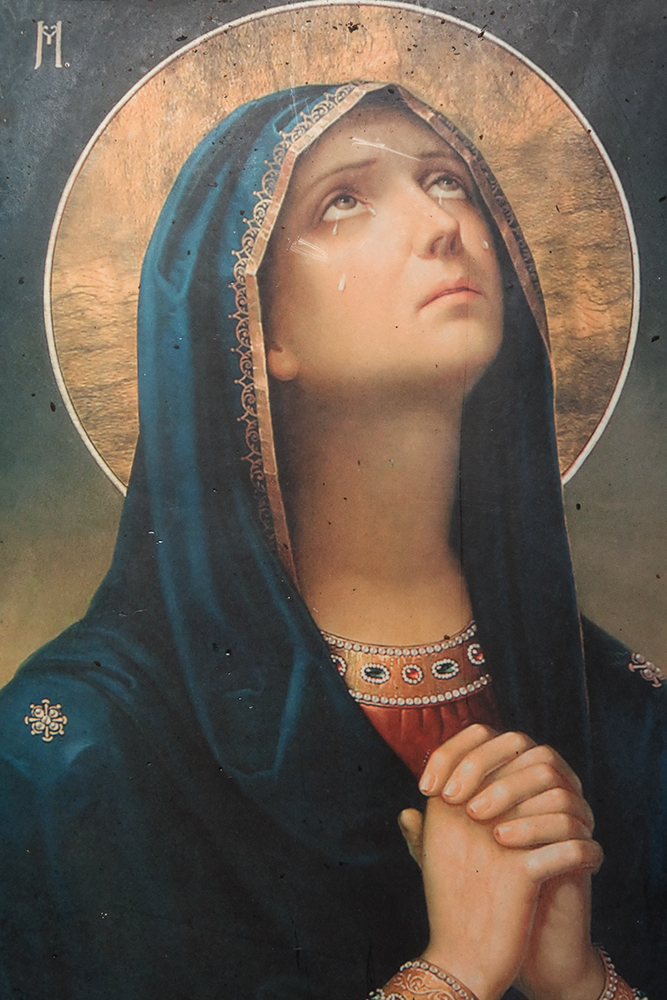There is no greater advocate than a mother. Moms are our biggest cheerleaders, promoters, and defenders. It makes sense that in the family of God Jesus wanted us to have the maternal support of Holy Mother Church, but also of a specific mother, his own mother, Mary. And so from the earliest centuries of the Church’s existence, the faithful have called upon Mary as a maternal, even regal advocate.
When Jesus hung on the Cross, moments before he entered the sleep of death and his side was split open pouring forth the very symbols of his Bride the Church–water symbolizing Baptism and blood symbolizing the Eucharist–he charged Mary with being a mother to his beloved disciple, who is symbolic of all disciples of Jesus (see John 19:27 and Revelation 12:17). In this moment reminiscent of the creation of Eve, Jesus gives his mother to be the mother of all those reborn to new life through the waters of Baptism and the nourishment of the Eucharist. In this way, she becomes truly “the mother of all the living” (Genesis 3:20) in a way that Eve never could be.
Much of the early narrative in Genesis uses regal terminology and imagery in describing Adam. From his dominion over the animals to his palatial garden abode, the first man is also in a sense the first king. But it wasn’t good that he was alone, and so the Lord gave him a queen to be his wife. By the time of the Israelite Monarchy, God’s people would follow a common middle eastern practice whereby the king’s mother, rather than one of his wives, served as queen. This Queen Mother held a position of great honor and importance as an advocate for the citizens of the kingdom, and she was given both a crown and a throne to symbolize her importance in the kingdom of God on earth (see 1 Kings 2:19 and Jeremiah 13:18). It is worth pointing out that the little that is recorded about biblical Queen Mothers often is not overly positive, but it is equally worth noting that the Queen Mother’s role was important enough that almost every Davidic king introduced in the biblical narrative is introduced along with his mother, by her name. When she was at her best, the Queen Mother’s role was to be especially one of advocating to the king on behalf of his subjects.
Jesus is the quintessential Davidic King. In fact, he is the King of the Universe. And his corresponding Queen Mother is the very same mother whom he gave to his followers: Mary of Nazareth. The first Eve was a queen, and so too is the second. Since she is the mother of the Creator, she is also the queen of the cosmos. Because Jesus is the King of Heaven and Earth, Mary is therefore the Queen of Heaven and Earth, redeeming a title usurped by a false deity (see Jeremiah 7:18 and 44:15-18). Mary’s queenship is a direct result of her son’s kingship, and it is especially exercised through her maternal intercession. As at the wedding at Cana, she continues to bring to her son’s attention the needs of his followers. According to one of the earliest Marian prayers, the Sub Tuum Praesidium from at least the third century, the believer seeks refuge under Mary’s maternal-regal protection.
These concepts are inextricably intertwined in a biblical worldview: queenship, intercessory power, and motherhood. At the Visitation, Elizabeth greeted Mary as “the mother of my Lord,” and the liturgical Feast of the Visitation, marked on May 31, was instituted by Pope Pius XII in 1954 as “a feast of Mary’s Queenship” (Ad Caeli Reginam 47). Queenship and motherhood go hand in hand. It is little wonder that the earliest Christians quickly followed the logic from Christ the King to Mary the Queen and Advocate.
As we honor our earthly mothers this month, let us not forget to honor our spiritual mother as well. She is Jesus’ dying bequest to his beloved disciples, and a true disciple will “take her into his home” (John 19:27).
Mary, our mother, our advocate, and our queen, pray for us.






